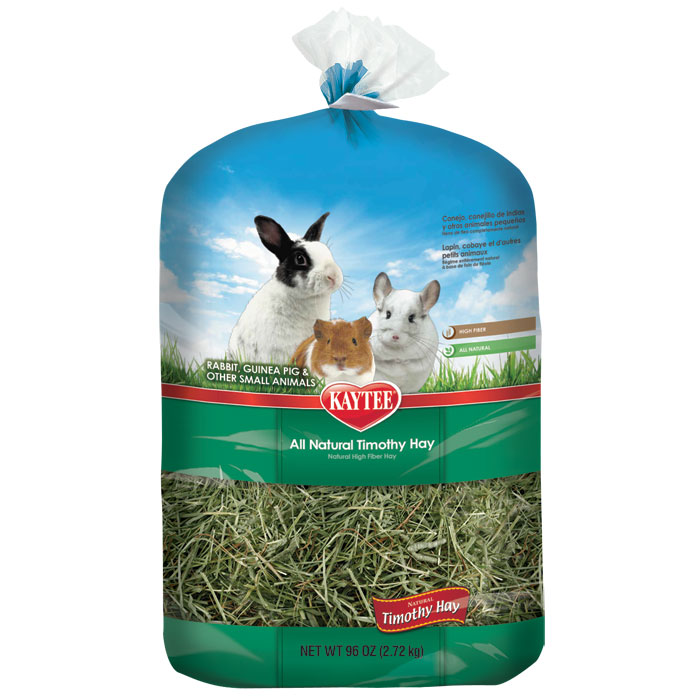As popular as these pets are, understanding the proper diet of our guinea pigs and rabbits is often cause for confusion, especially in first time owners. I thought it would be beneficial to compose a break down of the foods required of guinea pigs and rabbits for the overall health of these fuzzy little eating machines!
 Hays and Grasses
Hays and Grasses
Pellets used to be the main (if not the only) food offered to guinea pigs and rabbits. Studies have shown however, that feeding only pellets can affect the health of the animal. Rabbits and guinea pigs are grazing animals that spend a lot of their day eating. So why aren’t they all round as watermelons? The grasses and shrubs that these animals feed on in the wild are very low in nutrition, so they must eat a lot of them to obtain the amount of nutrients needed each day. Since this grazing behavior is instinctive, our furry friends from the pet store continue to eat all day long just like their wild cousins, except captive animals are eating nutrient-concentrated pellets that can cause obesity if consumed in large amounts. This is why the main diet of any guinea pig or rabbit should be hay, primarily Timothy Hay, which is closest to what they would be feeding on in the wild. Large handfuls of hay every day will help keep your pet in grazing mode which will aid in alleviating boredom, wearing down teeth, and keeping the weight off. You can also occasionally offer Brome, Orchard Grass, Meadow Mix, and Alfalfa to mix things up. Fresh grasses from the yard are also OK (in small amounts) as long as the grass is collected from an area free of pesticides, runoff and pet waste. Be sure the picked grasses do not contain wild mushrooms or berries, and rinse it thoroughly before giving to your pets.
Pellets
 Pellets are still important to your guinea pig or rabbit’s diet because they offer the nutrients needed for proper digestion and overall health. A small bowl of pellets offered every day is fine, about 1/3 cup every day per pound of body weight depending on breed and life stage of your pet. This is subject to change depending on how fast your animal’s metabolism is. Talk to your vet if you are unsure how much your pet.
Pellets are still important to your guinea pig or rabbit’s diet because they offer the nutrients needed for proper digestion and overall health. A small bowl of pellets offered every day is fine, about 1/3 cup every day per pound of body weight depending on breed and life stage of your pet. This is subject to change depending on how fast your animal’s metabolism is. Talk to your vet if you are unsure how much your pet.
Remember to feed your rabbits rabbit pellets and your guinea pigs guinea pig pellets. Although these pellets appear similar, rabbit and guinea pig specific diets are different and should be offered to the animal they are produced for only. I recommend Zupreme Nature’s Promise or Kaytee Fort-Diet brands.
Veggies and Fruits
Fresh veggies and fruits are a great treat – and they offer additional nutrition. For guinea pigs in particular, they can help fill the need for added Vitamin C. Here is a short list of approved veggies and fruits for your small pets:
Spinach
Kale
Parsley
Dandelion Leaves
Collard Greens
Romaine Lettuce
Bell Peppers (never hot peppers!)
Broccoli
Carrot
Celery
Grape Tomatoes
Apple (remove seeds and core)
Pear
Grapes (seedless)
Banana
Corn
This is a small list, but there are many other foods your rabbit or guinea pig will be willing to try. Even though Bugs Bunny prefers carrots, dark green leafy veggies should be offered more so than other veggies because they are closer to your animals natural diet. Fruits should only be offered infrequently and in small amounts because they are high in sugar (which is why our pets love to over eat them). Always wash all fresh foods thoroughly and remove any old foods that weren’t eaten within an hour. Experiment with different veggies and fruit and you will find out what your pet prefers quickly.
Treats
Finally we get to treats. Processed small animal treats are available in every shape, form, and color, but be sparing with these as the main ingredient in many of them is sugar and artificial preservatives. Treats like Yogurt Drops are a favorite among many small animals, but you should only give your rabbit or guinea pig two to three pieces of these a week if at all. Fresh veggies, hay, and pellets are the best things to feed your pets. Think of the human food pyramid. All of the sugar and fat is in the tiniest block. This is where processed treats should be in your small pet’s diet!
 That Pet Blog That Pet Place Pet Blog
That Pet Blog That Pet Place Pet Blog


Hi, thanks for sharing.